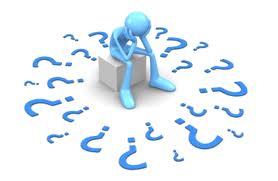 Yesterday, an email washed into my inbox from someone named Katie. She asked me to please use my megaphone (aka the DonorDreams blog platform) to tell the world about a corporate giving promotion by a Tom’s of Maine, which is a company producing environmentally safe products such as toothpaste, soap and deodorants. The program is called “50 States for Good,” and she described it in her email as “making it easy for nonprofits to secure $10,000 in funding to keep the goodness going“.
Yesterday, an email washed into my inbox from someone named Katie. She asked me to please use my megaphone (aka the DonorDreams blog platform) to tell the world about a corporate giving promotion by a Tom’s of Maine, which is a company producing environmentally safe products such as toothpaste, soap and deodorants. The program is called “50 States for Good,” and she described it in her email as “making it easy for nonprofits to secure $10,000 in funding to keep the goodness going“.
I’ve read Katie’s email at least five times in the last 24 hours. For some reason, I cannot get the words “. . . making it easy . . . ” out of my head.
Really? Easy?
I wonder if Katie has ever been responsible for running a non-profit organization before or been the point person for an agency’s fundraising program? My guess is that she has not, but if she has . . . then it is possible that she found it “easy“.
 I’m not trying to pick on Katie and I didn’t wake up on the wrong side of the bed this morning. I just don’t find programs like 50 States for Good easy. Let’s take a closer look at what many of these programs require of non-profits who choose to participate:
I’m not trying to pick on Katie and I didn’t wake up on the wrong side of the bed this morning. I just don’t find programs like 50 States for Good easy. Let’s take a closer look at what many of these programs require of non-profits who choose to participate:
- A simple essay stating your case for support and outlining a specific project for which you’re hoping to securing funding,
- The company hosts a “simple public vote” where the public will decide which 15 agencies receive $10,000, and
- They host the vote, but agencies who are in the competition are frantically reaching out to donors, telling them about the competition, and begging people to go vote. I’ve seen contests consume some organizations . . . emails, tweets, Facebook post . . . push-push-push . . . promote-promote-promote.
Let me spell out my concerns more clearly:
- I don’t think philanthropy is a contest, and I fear that programs like this warp the concept in some people’s minds.
- I believe your board volunteers, supporters and donors are important people. Pushing them to vote-vote-vote isn’t how I suggest you ask them to invest their time on behalf of your mission.
- These contests are not about advancing your mission. It is about the company’s marketing plan and getting their hands on your donors’ personal information and data.
- Most agencies don’t win anything in contests like these, and they walk away empty-handed without anything to show for their time or all of that consumer data. This is a simple ROI calculation for me. How many annual campaign pledges could an organization have secured if it had invested the same amount of time in sitting down face-to-face with its supporters and donors.
I blogged about this more than a year ago in a post titled “Non-profits can do without the Pepsi-Starbucks-Chase-Kohls voting thing“.
So, why do so many agencies choose to participate? I think this YouTube video of last year’s big winner captures it best:
[youtube=http://www.youtube.com/watch?v=Mn-bgZnusY8]
These contests appeal to our basic desire to WIN-WIN-WIN. Additionally, I suspect these type of corporate giving campaigns are validating for the winners. Validation of your mission. Validation of your vision. Validation of the project you’re working on. Validation! Perhaps, Sally Fields summed it up best during her Oscars acceptance speech:
[youtube=http://www.youtube.com/watch?v=rl_NpdAy3WY]
The fact of the matter is that the face of corporate philanthropy is (or perhaps has) changed. It used to be that companies focused on being good corporate citizens. You asked and they made decisions about where to give. Of course, their decisions aligned with business interests and creating a “halo effect” putting them in the best possible light with their customers and employees.
While today’s corporate giving efforts are still about these things, it goes much farther than good citizenship and creating positive publicity. It is also all about driving foot traffic, making sales, gathering consumer data, building the company’s social media presence, and alignment of business objectives and charitable objectives.
In a nutshell . . . corporate philanthropy is becoming the for-profit sector’s “engagement strategy“.
The question being begged by this morning’s blog post is:
Has your resource development plan adjusted to this shift?
Your annual written resource development plan should look like an inventory of strategies and tactics. If you’re having a hard time answering this question, I suggest taking your plan off the shelf, turning to the pages pertaining to corporate giving, and looking for evidence that your strategies and tactics address the needs outlined in the previous few paragraphs.
How many of these online corporate voting contests will you undertake in the upcoming year? What are your strategies when entering these contests? If your plan doesn’t address these questions, then your agency obviously hasn’t made the adjustment. Here are a few links and resources pertaining specifically to these online contests:
- PR 20/20: “Online Corporate-Giving Contests: Tips and Strategies for Non-Profits“
- Joanne Fritz at about.com: “Tips for Charity Nonprofit Contests“
- Skoll World Forum: “The Dark Side of Online Voting Contests“
My best advice?
Engage your resource development committee in this discussion. Write into your annual resource development plan a set of policies and rules that will drive future decisions on when it makes sense for your agency to participate in these contests. Personally, I would make it a policy to never do more than one of these contests per year because you don’t want to run the risk of pissing off your donors with countless requests to vote-vote-vote.
Have you ever participated in one of these contests? If so, what was your experience? Have you shifted your approach to corporate philanthropy in recent years? If so, what are you doing now that you weren’t doing previously to align with the for-profit sector and market professionals’ desires to use philanthropy to drive sales and traffic, cultivate new customers, and secure ROI? Please scroll down and share your thoughts and experiences in the comment box below.
Oh yeah . . . a quick disclaimer. I am not picking on Tom’s of Maine. They are an awesome company, and they are not doing anything wrong by organizing an online charitable giving contest. I like Tom’s products, and you should check them out online by clicking here. If your agency up for the challenge and convinced this contest is a good fit for your fundraising program, then by all means please check it out and participate. Tom’s is one of those socially responsible companies who has worked hard to earn their “halo,” and I salute them!
Here’s to your health!
Erik Anderson
Founder & President, The Healthy Non-Profit LLC
www.thehealthynonprofit.com
erik@thehealthynonprofit.com
http://twitter.com/#!/eanderson847
http://www.facebook.com/eanderson847
http://www.linkedin.com/in/erikanderson847


 Welcome to O.D. Fridays at DonorDreams blog. Every Friday for the foreseeable future we will be looking at posts from John Greco’s blog called “
Welcome to O.D. Fridays at DonorDreams blog. Every Friday for the foreseeable future we will be looking at posts from John Greco’s blog called “ Too many resource development plans (aka fundraising plans) are written behind close doors without any input from those who we depend upon to help with implementation. And then we wonder why no one is jumping in to help and why board members are acting as if to say: “That’s not what I agreed to do … go implement YOUR plan.”
Too many resource development plans (aka fundraising plans) are written behind close doors without any input from those who we depend upon to help with implementation. And then we wonder why no one is jumping in to help and why board members are acting as if to say: “That’s not what I agreed to do … go implement YOUR plan.”



 I love this time of the year because
I love this time of the year because  In a nutshell, slow-and-steady progress which is a re-run from the last many years of Giving USA reports. Is it just me or is this beginning to feel a little bit like that
In a nutshell, slow-and-steady progress which is a re-run from the last many years of Giving USA reports. Is it just me or is this beginning to feel a little bit like that 







